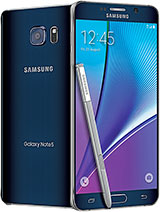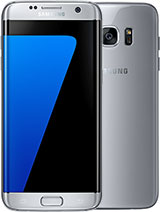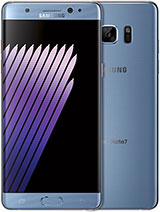Galaxy Note7 vs. S7 edge vs. Note5: Camera shootout
Camera shootout

Introduction
There can be no rivalry amidst Galaxies, but this has never stopped us from putting them against each other in all sorts of comparisons. It's what we call a shootout and this time, we'll be focusing on camera performance.
In this edition of our intergalactic shootout (it's certainly not our first), we'll be leaving three top Galaxy smartphones to battle it out - we've got the Galaxy Note7, the Galaxy S7 edge, and last year's Galaxy Note5. The trio was released within less than a year and is eyed by millions of fans. But this is a friendly battle, creatures from a single team fighting for the sake of increasing their reputation, if you would forgive us the Pokemon pun.

The three curved Galaxies here are all considered top of the line, even though the older Note5 features a slightly less powerful chipset. They are all beautiful though and capable in their own right and putting them against each other in a VS article would hardly produce a winner.



Samsung Galaxy Note5 • Samsung Galaxy S7 edge • Samsung Galaxy Note7
That's why we are taking those three into a friendly neighborhood shootout. We want to explore Samsung's achievements in the camera development over the course of the last 12 months and see where it leads us.
The Galaxy Note5 relies on a 16MP 16:9 camera with f/1.9 aperture and optical image stabilization. The Galaxy S7 edge and Galaxy Note7 switch the sensor back to a regular 4:3 one with 12MP resolution, but upgrade the setup with blazing-fast autofocus and an even wider f/1.7 aperture. The delay between the S7 edge and Note7 release gave Samsung an opportunity to refine the camera interface and possibly the processing.
|
Samsung Galaxy Note5
|
Samsung Galaxy S7 edge
|
Samsung Galaxy Note7
|
|
|
Primary camera resolution
|
16MP
5312 x 2988px 16:9 aspect |
12MP
4032 x 3024px 4:3 aspect |
12MP
4032 x 3024px 4:3 aspect |
|
Primary camera sensor
|
1/2.6" sensor size, 1.12 µm pixel size, Sony IMX240
28 mm, f/1.9 |
1/2.5" sensor size, 1.4 µm pixel size, Sony IMX260
26 mm, f/1.7 |
1/2.5" sensor size, 1.4 µm pixel size, Sony IMX260 26 mm, f/1.7 |
|
Stabilization
|
Optical Image Stabilization
|
Optical Image Stabilization
|
Optical Image Stabilization
|
|
Focus
|
Phase Detection Auto Focus
|
Dual Pixel Phase Detection Auto Focus
|
Dual Pixel Phase Detection Auto Focus
|
|
Flash
|
Single LED Flash
|
Single LED Flash
|
Single LED Flash
|
|
Features
|
Touch focus, geo-tagging, face detection, panorama, Auto HDR, Manual mode, Virtual shot, Selective Focus, Live Broadcast, Slow-motion video, Hyperlapse video, Downloadable modes
|
Touch focus, geo-tagging, face detection, panorama, Auto HDR, Manual mode, Virtual shot, Selective Focus, Live Broadcast, Slow-motion video, Hyperlapse video, Downloadable modes
|
Touch focus, geo-tagging, face detection, panorama, Auto HDR, Manual mode, Virtual shot, Selective Focus, Live Broadcast, Slow-motion video, Hyperlapse video, Downloadable modes
|
|
Video recording
|
2160p@30fps, 1080p@60fps, 1080p@30fps
|
2160p@30fps, 1080p@60fps, 1080p@30fps
|
2160p@30fps, 1080p@60fps, 1080p@30fps
|
|
Video recording
|
Optical stabilization, digital stabilization (1440p and below), HDR, stereo sound rec.
|
Optical stabilization, digital stabilization (1440p and below), HDR, stereo sound rec.
|
Optical stabilization, digital stabilization (1440p and below), HDR, stereo sound rec.
|
|
Front camera
|
5 MP, f/1.9, 22mm, Auto HDR, Panorama
1440p@30fps, dual video call |
5 MP, f/1.7, 22mm, Auto HDR, Panorama
1440p@30fps, dual video call |
5 MP, f/1.7, 22mm, Auto HDR, Panorama
1440p@30fps, dual video call |
So, if you are among those users who like to have the best possible camera in their pocket, and you are wondering between one of these three either for budget, or feature reasons, this article is for you.
On the other hand, if you'd love to see how those three beasts cross the finish line almost simultaneously when it comes to benchmarks, designs, interface, and screen quality, you should maybe refer to our reviews and specs pages instead.
Now, let's fire up those camera apps, and let this intergalactic camera shootout begin!
Reader comments
- the samsung tech guy
- 24 Oct 2018
- T7x
note 7 is 5.7 inch and s8+is 6.2 inch
- Anonymous
- 19 Apr 2017
- 75G
The S8+ has a 6.1 or 6.2 size screen so if I'm not mistaking it is bigger than the note7.. I'm a note fan and I ordered the s8+.
- AnonD-658171
- 01 Apr 2017
- wi4
good